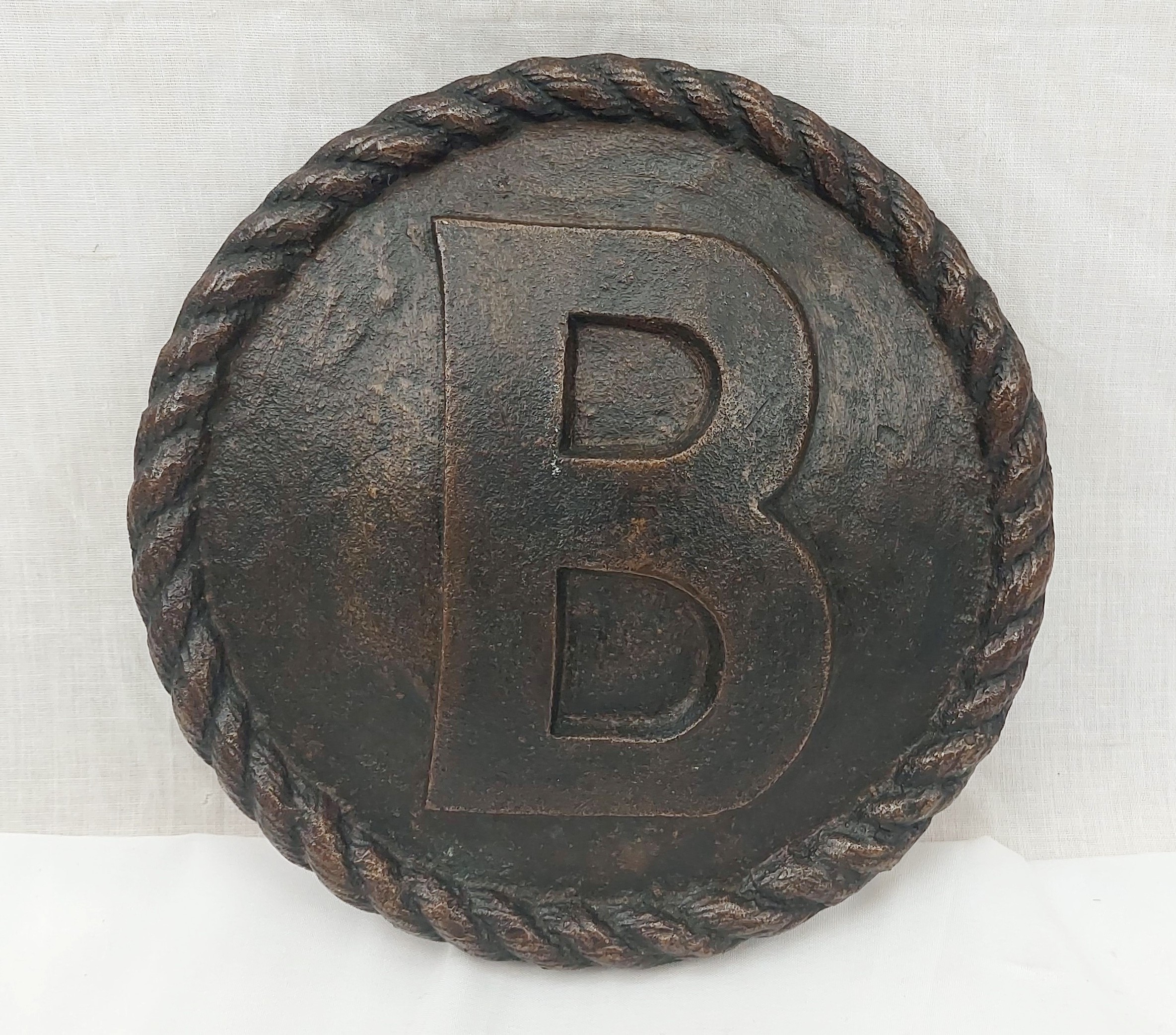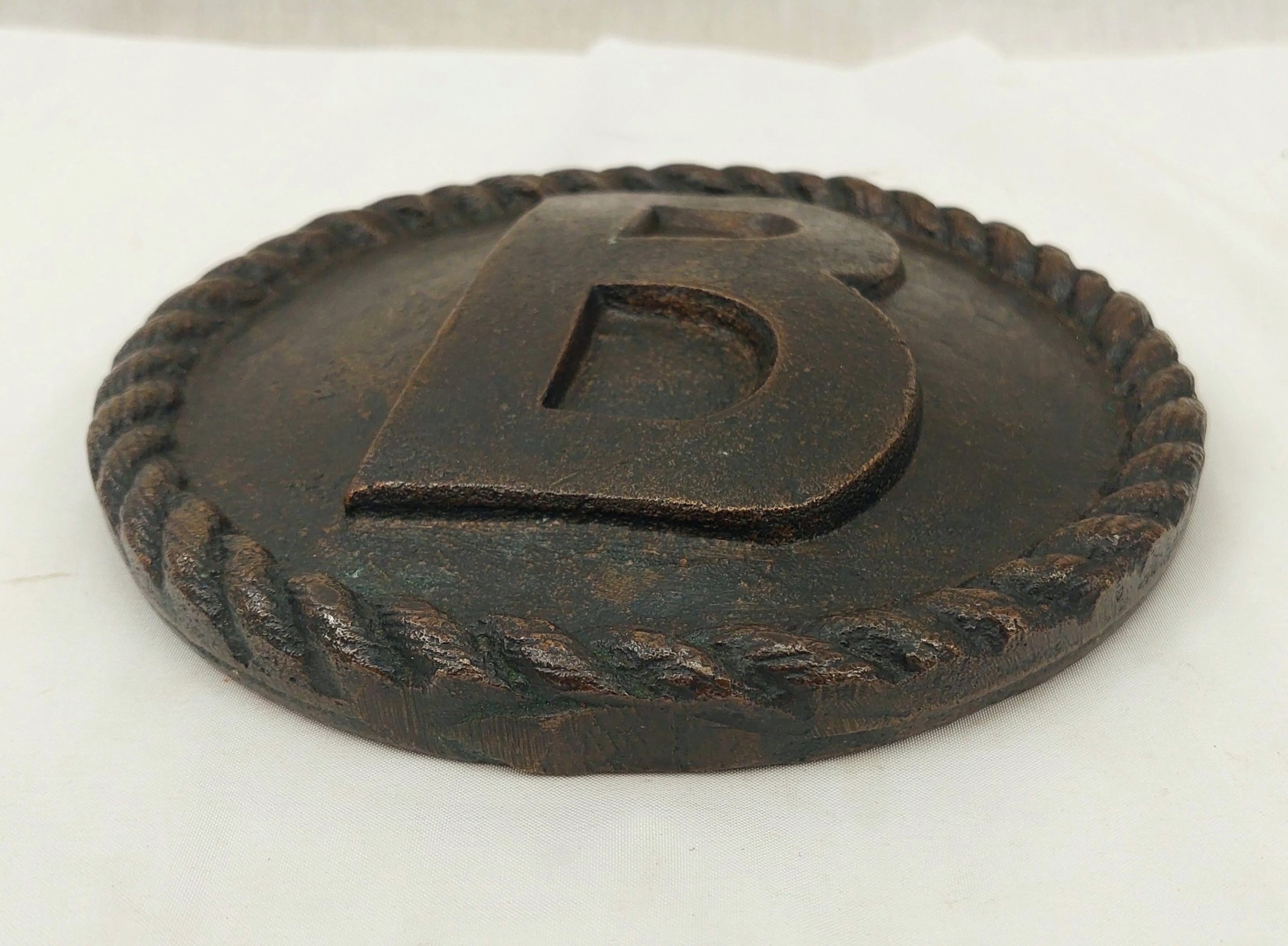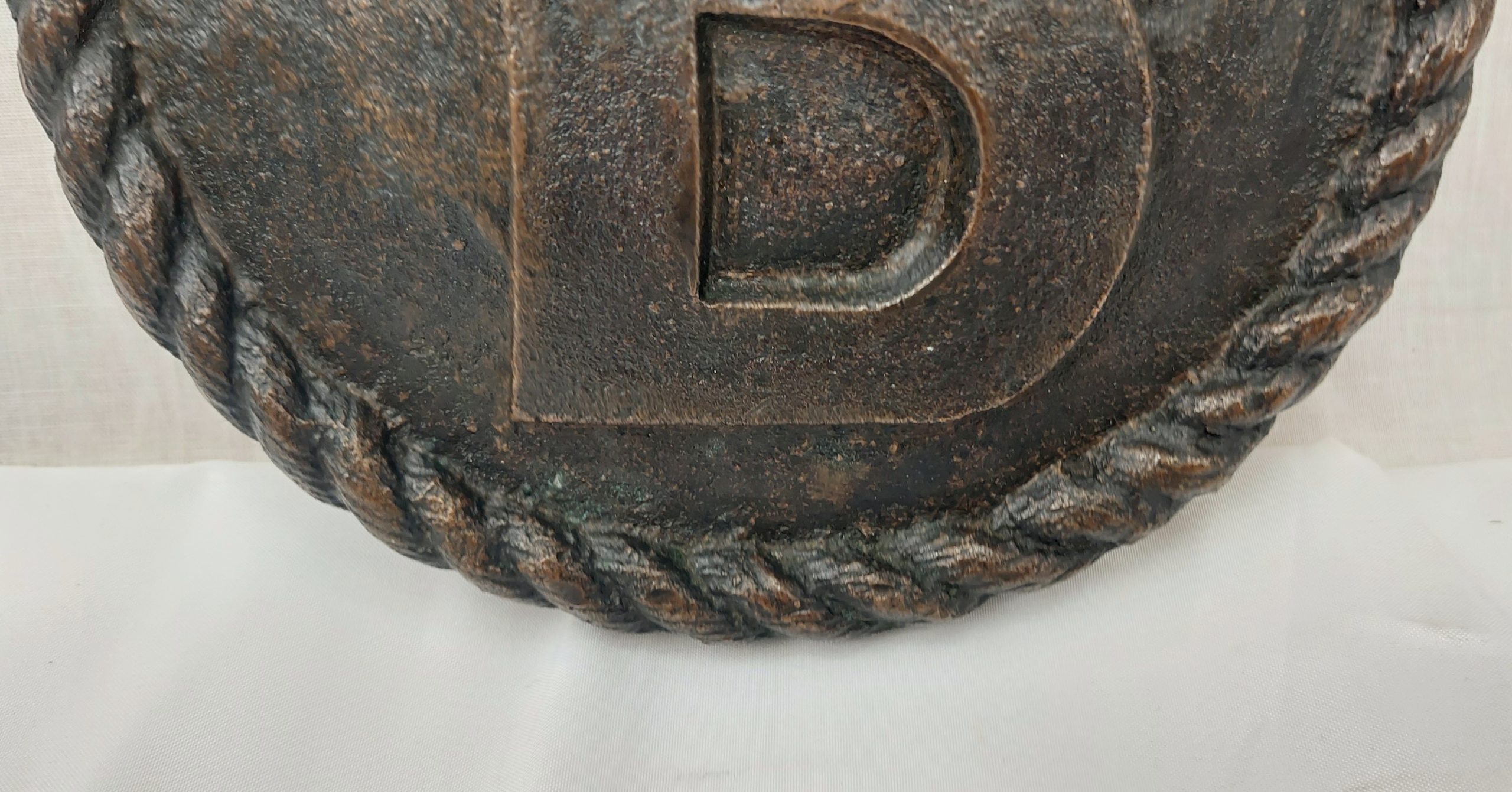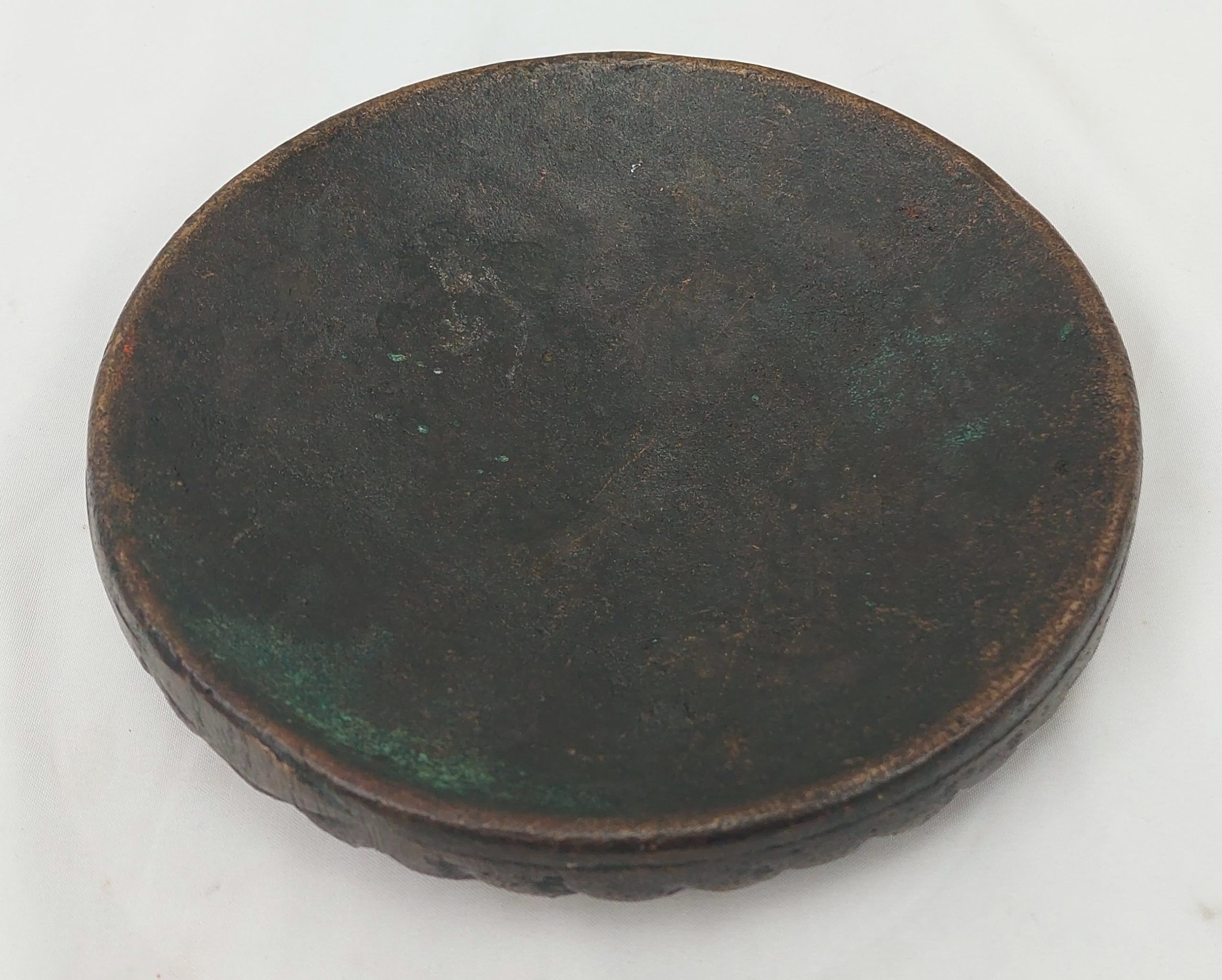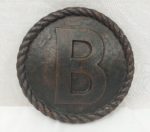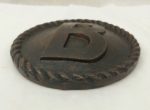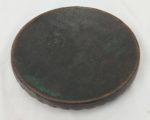~ Bronze WW2 Tiger Class Light Cruiser HMS Blake (C99) Main Battery Tompion ~
The tompion, a gun muzzle cover, has a large central letter ‘B’, rope border and concave back.
~ HMS Blake (C99) ~
HMS Blake was a light cruiser of the Tiger class of the British Royal Navy, the last of the (traditional) Royal Navy gun-armed cruisers in the 20th century. She was named after Robert Blake, a 17th-century admiral who was the “Father of the Royal Navy”. She was ordered in 1942 as one of the Minotaur class of light cruisers. They had a low construction priority due to more pressing requirements for other ship types during World War II, particularly anti-submarine craft.
Blake was laid down in 1942. In 1944, she was renamed Tiger, then back to Blake again in 1945, the year she was launched partially constructed at the Fairfield Shipbuilding and Engineering Company at Govan, by Lady Jean Blake, wife of Vice Admiral Sir Geoffrey Blake. Construction was suspended in 1946 and she was laid up at Gareloch.
In 1954, construction of Blake resumed, but to a new design. The new design was approved in 1951, but construction did not resume until 1954. She would have fully automatic 6 inch guns in twin high-angle mounts with each gun capable of shooting 20 rounds per minute, and a secondary battery of fully automatic 3 inch guns which delivered 90 rounds per minute per gun. She would have no lighter anti-aircraft armament or torpedo tubes. Air conditioning was fitted throughout the ship, and a 200-line automatic telephone exchange was installed. Each 6 inch and 3 inch mounting had its own director, linked to a dedicated radar on the director. On 18 March 1961, Blake finally commissioned into the Royal Navy, to date the last (traditional) cruiser to do so. Just two years later, she was placed in reserve.
From 1965 to 1969, she underwent a major conversion to become a helicopter and command cruiser. This reconstruction included replacing the aft 6 inch and 3-inch mounts with a flight deck and hangar. She also had new radars and taller funnels. She had excellent command, control, and communications facilities installed, and found use as a flagship to task groups. The refit was very expensive; during the conversion, a major fire broke out causing considerable damage and raising the costs still further. There were concerns that the money used to convert Blake and her sister ship Tiger to helicopter cruisers drained much-needed resources better used elsewhere.
In 1969 Blake deployed to Gibraltar along with other Royal Navy units in order to ‘fly the flag’ in response to Spanish hostility following the closure of the Gibraltar-Spain border by General Franco. Also in 1969 a Royal Air Force (RAF) Harrier jet landed on Blake. In 1971, she was present during the emotional withdrawal from Malta, supporting the commando carrier Bulwark. In 1977 she took part in the Fleet Review of the Royal Navy during the Silver Jubilee celebrations for Queen Elizabeth II, which took place off Spithead, site of many Fleet Reviews.
The cruiser was carried Westland Wessex HAS.3 helicopters of 820 Naval Air Squadron from June 1969; these were replaced by the Westland Sea King HAS.1 helicopter in December 1972, continuing until Blake was withdrawn from service in 1979. Blake was the last ship to fire a six-inch gun in the Royal Navy. Her large crew made her an expensive ship to operate and maintain.
~ Condition ~
Please refer to the images. The bronze is in excellent order.
~ Dimensions ~
The tompion is 18 cm (7 inches) in diameter . It weighs 1.5 Kg.
JA_3333121879

